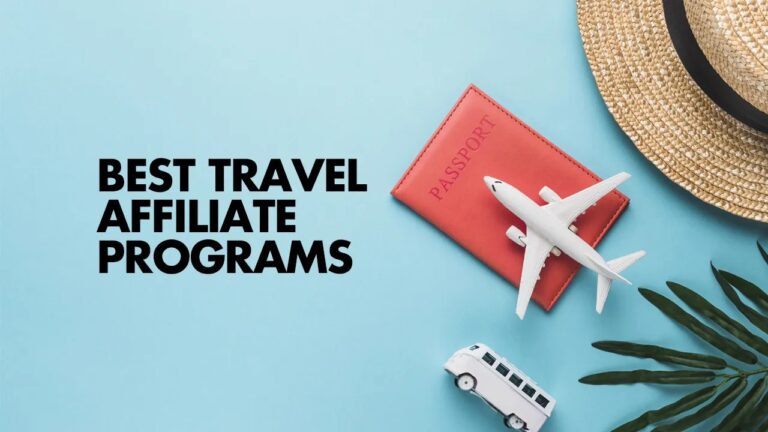Travel is back—stronger than ever. Planes are full, hotels are bustling, and travelers are eager to explore every corner of the globe. But alongside this travel boom, there’s another opportunity quietly growing: earning through travel affiliate programs.
If you’ve ever shared a travel tip, recommended a hotel, or posted about your favorite booking platform, you’ve already taken the first step toward affiliate marketing. In 2025, this isn’t just a side hustle—it can be a serious, sustainable business.
This guide will walk you through what travel affiliate programs are, why they’re thriving now, and how you can make the most of them without turning your content into an endless sales pitch.
Understanding Travel Affiliate Programs
A travel affiliate program is a partnership between a travel company—like a booking site, airline, tour operator, or gear brand—and a content creator. You promote their services, and when someone books through your referral link, you earn a commission.
The scope is wide:
- Accommodation – Hotels, vacation rentals, boutique resorts.
- Transportation – Flights, car rentals, train passes.
- Tours & Activities – Local excursions, guided adventures.
- Travel Gear – Luggage, backpacks, cameras.
- Travel Insurance – Essential for international trips.
Affiliate programs have existed for years, but in 2025 they’ve evolved. They’re now powered by better tracking technology, smarter commission models, and an increased focus on influencer-style marketing.
Why 2025 Is a Breakthrough Year for Travel Industry Affiliate Programs
The travel industry’s affiliate sector is booming for several reasons:
1. Travel Demand Has Skyrocketed
After years of restrictions, travelers are making up for lost time. They’re booking longer trips, exploring more destinations, and spending more money per trip—meaning higher commissions for affiliates.
2. Niche Travel Is Thriving
Instead of broad “Top 10 destinations” content, audiences want hyper-relevant recommendations:
- Vegan-friendly destinations.
- Pet-friendly travel.
- Digital nomad hubs.
- Luxury eco-lodges.
This targeted approach aligns perfectly with travel industry affiliate programs that reward specificity.
3. Technology Is Your Ally
Affiliate dashboards now give real-time insights on clicks, bookings, and earnings. You can see exactly which content works and adjust your strategy instantly.
4. Trust Is the New Currency
People are skeptical of generic ads, but they value genuine recommendations. When you share your own experiences—photos, stories, tips—your audience sees you as a trusted travel advisor.
How to Choose the Best Travel Affiliate Programs
Not all programs are created equal. The best travel affiliate programs offer:
- Strong Brand Reputation – Well-known, trustworthy companies increase conversions.
- Competitive Commissions – Especially important for big-ticket bookings like resorts or tours.
- Long Cookie Duration – Gives you credit even if the user books days or weeks later.
- Global Reach – If your audience is international, make sure the program supports multiple currencies and languages.
- Marketing Resources – Banners, widgets, and deep links that help you promote effectively.
Step-by-Step: Building a Profitable Travel Affiliate Strategy
1. Pick Your Niche and Audience
Don’t try to appeal to everyone. A focused audience will trust your recommendations more. Examples:
- Backpacking through Southeast Asia.
- Luxury Caribbean cruises.
- Family-friendly theme park trips.
2. Create Content That Solves Problems
Instead of a generic “Top 10 Hotels in Paris,” go specific:
- “5 Romantic Boutique Hotels in Paris for Art-Loving Couples.”
- “Best Family-Friendly Paris Hotels Near Disneyland.”
This level of detail increases click-through rates and conversions.
3. Diversify Your Platforms
You don’t need to stick to one medium. Combine:
- Blog articles for SEO traffic.
- YouTube videos for destination inspiration.
- Instagram Reels for short, eye-catching tips.
- Pinterest boards for long-term discovery.
- Email newsletters for direct audience engagement.
4. Monitor and Optimize
Use analytics to track which links convert best. Test different placements, headlines, and content types to improve results over time.
Content Ideas That Convert in 2025
- Destination Itineraries – Include booking links for hotels, tours, and transport.
- Seasonal Travel Guides – “Best Ski Resorts in Europe This Winter.”
- Comparison Posts – “Booking.com vs Airbnb for Digital Nomads.”
- Gear Reviews – Luggage, tech, and travel accessories.
- Budget vs Luxury Guides – Serving both ends of the travel market.
Common Mistakes to Avoid
- Promoting Too Many Programs – Dilutes trust and confuses your audience.
- Chasing Commissions Only – Recommend products and services you genuinely believe in.
- Neglecting SEO – Without search visibility, you’ll struggle to get steady traffic.
- Forgetting About User Experience – Make sure your content flows naturally and isn’t overloaded with links.
Looking Ahead: The Future of Travel Affiliate Marketing
The next few years will bring even more changes:
- AI-powered recommendations will tailor offers to each reader.
- Virtual Reality tours could help users preview hotels before booking.
- Sustainability-focused programs will attract eco-conscious travelers.
Adapting early to these trends will help you stay ahead in the competitive affiliate landscape.
Final Thoughts
The opportunity in travel affiliate programs has never been bigger. Whether you’re a blogger, influencer, or simply someone with a passion for sharing great travel experiences, the tools are available to turn your recommendations into revenue.
By focusing on a niche, choosing the best travel affiliate programs, and building genuine, value-driven content, you can grow a reliable income stream—while helping travelers make unforgettable memories.
The world is ready to travel again. And with the right approach, you can be the trusted guide who helps them get there—earning as you go.


